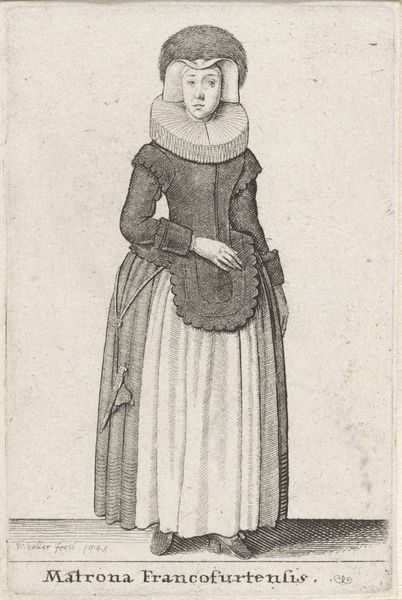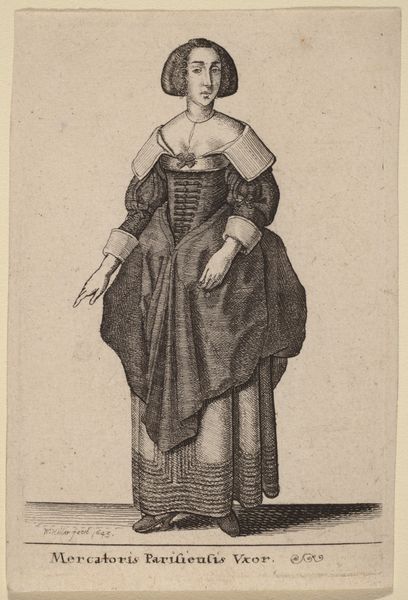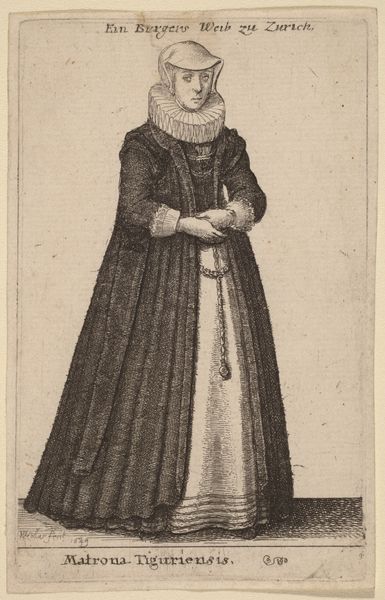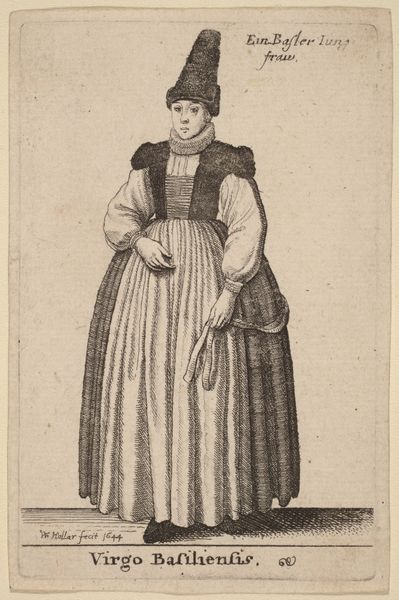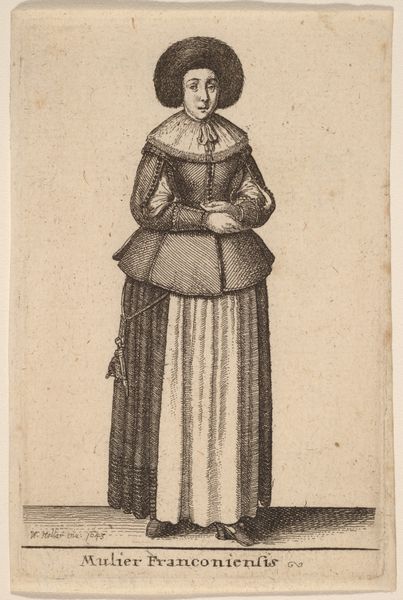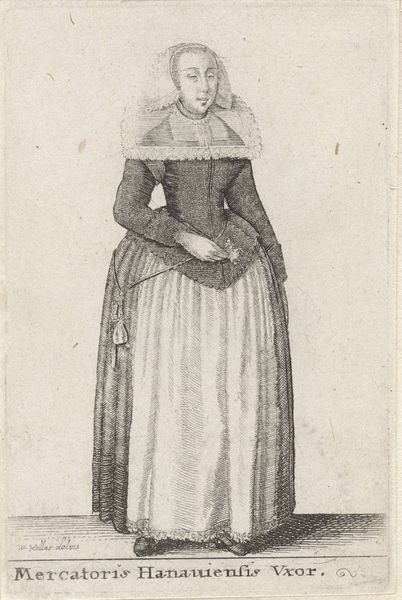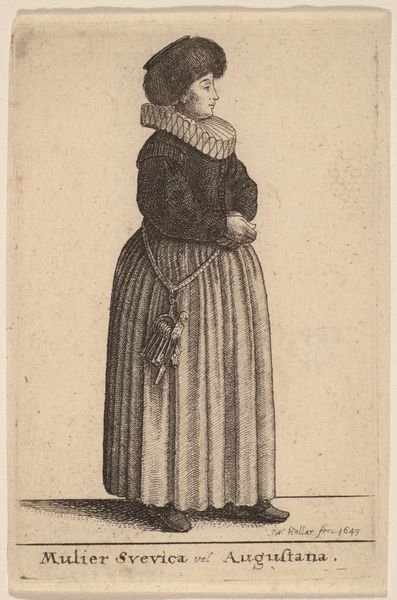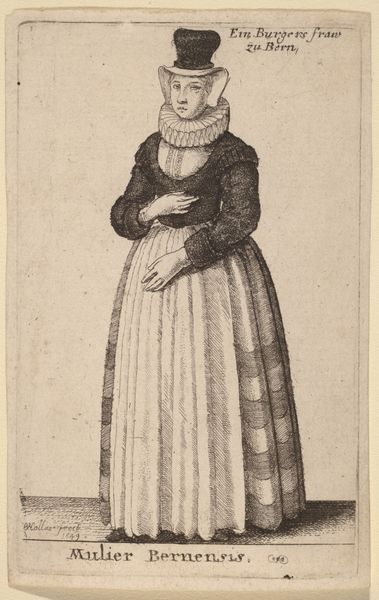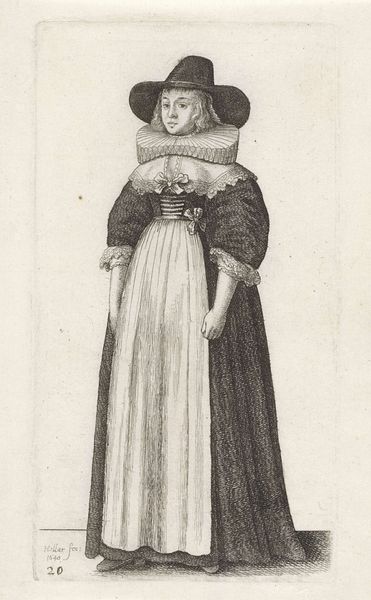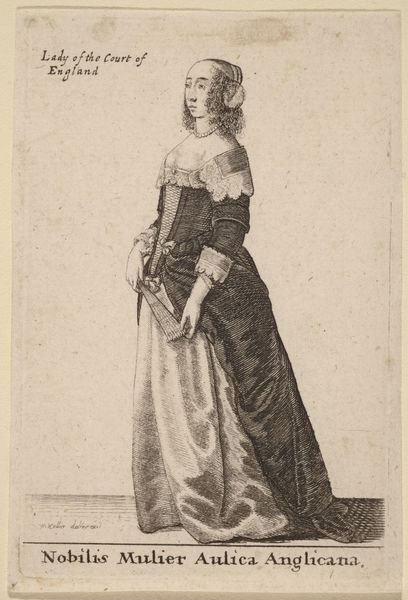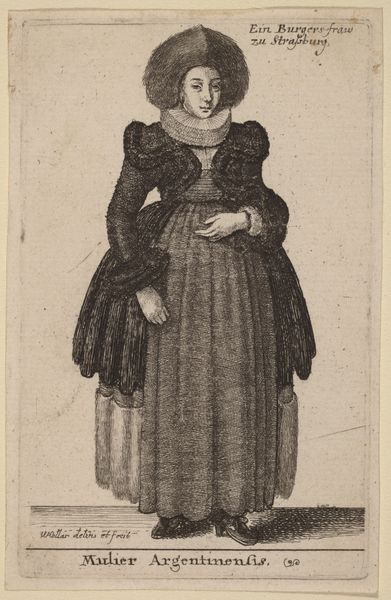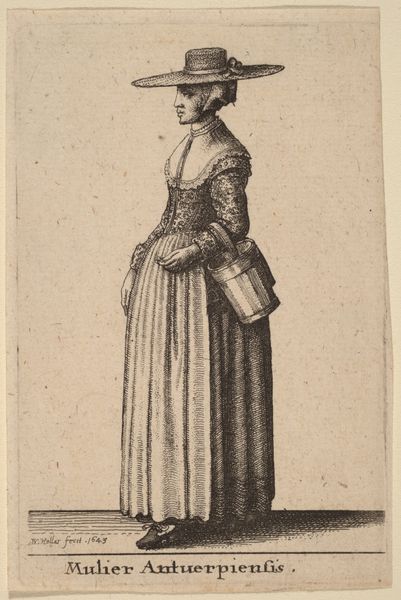
print, engraving
#
portrait
#
baroque
# print
#
figuration
#
engraving
Copyright: National Gallery of Art: CC0 1.0
Curator: Wenceslaus Hollar created this engraving, titled "Mulier ex inferiori Palatinatu," in 1643. Editor: The image immediately gives a sense of contained dignity. The woman’s posture, her guarded expression, even the layering of fabrics creates a feeling of formality. Curator: Hollar, working in the Baroque style, was very interested in documenting the lives of ordinary people during a tumultuous period. We must remember that "Palatinate" refers to a region in what is now Germany, which was ravaged during the Thirty Years' War. Representations like this offered glimpses into a world upended by conflict. Editor: The ruffled collar she wears, nearly a full circle, is striking. The circle can often symbolize wholeness, protection, but here it seems almost restrictive, a boundary both physical and symbolic. Notice how the somber palette and fine lines emphasize this impression. Curator: These prints served an important role in disseminating visual information and reflecting emerging class structures. Prints allowed for broader circulation of images and ideas within society. Depictions of different social classes served to emphasize the growing distinctions and roles within these societies. Editor: Precisely. There's a story told here about societal expectations through details like the plain, unadorned dress and her rather severe hairstyle. These visuals communicate the role of women within this context. There's a palpable sense of resilience but also perhaps resignation. Curator: I am reminded of how artists act as chroniclers during unstable periods, capturing these quiet, personal moments alongside accounts of dramatic political events. Editor: And how such visual documents accumulate over time, giving shape to our understanding of collective cultural memory. Each symbol offers continuity, connecting us with the values and challenges of the past. It gives depth and context to an individual in her time. Curator: Looking at it through that lens truly underscores the significance of preserving these works as testaments to the human experience. Editor: It transforms this portrait into so much more than just an image; it becomes a layered reflection on time, struggle, and the quiet persistence of daily life.
Comments
No comments
Be the first to comment and join the conversation on the ultimate creative platform.
